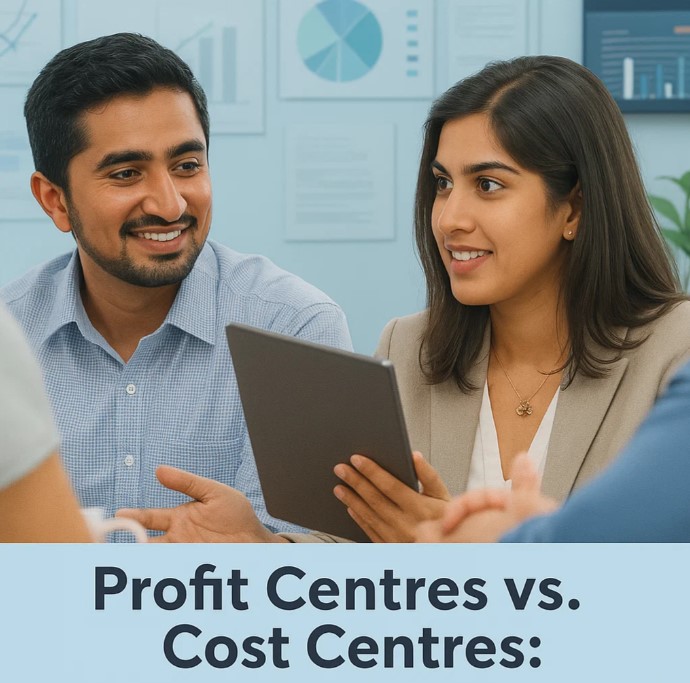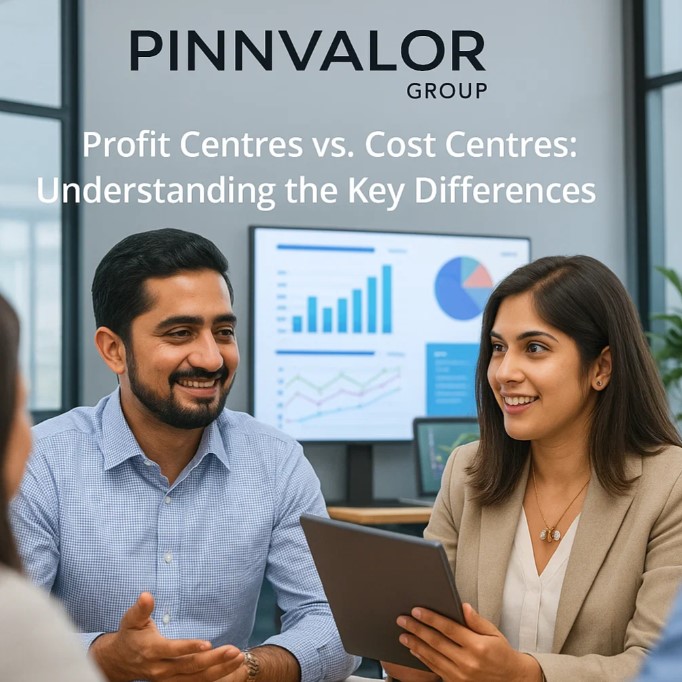
Profit Centres vs. Cost Centres: Understanding the Key Differences
In the complex world of business management, understanding the structure and performance of different organizational units is crucial. Two fundamental concepts in this area are Profit Centres and Cost Centres. Both play unique roles in shaping a company’s financial health, but they differ significantly in function, purpose, and impact on decision-making. In this blog, we will break down these differences and explore how businesses use them to drive growth and efficiency.
Could mastering Profit and Cost Centres be the key to smarter business decisions?>
Cost Centres support, Profit Centres earn—together they fuel your organization’s journey to success.
What is a Cost Centre?
A Cost Centre is a department or unit within an organization that does not directly generate revenue but incurs costs in supporting the business. These units are essential for smooth operations, but their performance is measured mainly by how efficiently they manage costs rather than profits.
Examples of Cost Centres:
- Human Resources (HR)
- Information Technology (IT)
- Maintenance and Facility Management
- Customer Support
Key Features of Cost Centres:
- Expense-Focused: The primary responsibility is to control and optimize costs.
- No Direct Revenue: These units don’t directly contribute to profit generation.
- Performance Measurement: Success is measured by adherence to budgets and cost efficiency.
- Supportive Role: They provide essential services that enable profit-generating departments to function effectively.
What is a Profit Centre?
A Profit Centre, on the other hand, is a business unit responsible for generating revenue and profits. Unlike Cost Centres, Profit Centres are measured by both income generated and expenses incurred, making them key drivers of business profitability.
Examples of Profit Centres:
- Sales and Marketing Departments
- Product Lines
- Regional or Branch Offices of a Retail Chain
- Online Business Units

Key Features of Profit Centres:
- Revenue and Profit-Oriented: Performance is judged by profitability.
- Autonomous Decision-Making: They often have the authority to make decisions regarding pricing, marketing, and sales strategies.
- Direct Contribution to Business Growth: Profit Centres are central to expanding the company’s revenue streams.
- Performance Metrics: KPIs include revenue, profit margins, return on investment (ROI), and cost-to-revenue ratio.
Key Differences Between Profit Centres and Cost Centres
| Feature | Cost Centre | Profit Centre |
|---|---|---|
| Objective | Control and minimize costs | Generate revenue and profits |
| Contribution | Supports operations | Drives business growth |
| Performance Metric | Efficiency in cost management | Revenue, profit, and ROI |
| Decision-Making Authority | Limited | High, especially on pricing and sales strategies |
| Examples | HR, IT, Maintenance | Sales department, product line, regional office |
| Focus | Expense control | Profit maximization |
How MIS Supports Cost and Profit Centres
- Cost Centres: MIS tracks operational costs, highlights inefficiencies, and ensures departments operate within budgets.
- Profit Centres: MIS provides detailed revenue reports, profitability analysis, and insights into market performance.
By leveraging MIS, managers can allocate resources more effectively, identify cost-saving opportunities, and maximize overall profitability.
Why Understanding the Difference Matters
Knowing the distinction between Cost and Profit Centres helps businesses:
- Allocate budgets strategically
- Set realistic performance targets
- Optimize operational efficiency
- Make informed strategic decisions
- Align departmental objectives with organizational goals
Without this understanding, organizations risk mismanaging resources, overlooking profitability, or overburdening departments that are meant to be supportive rather than revenue-generating.
Conclusion
Both Cost Centres and Profit Centres are essential to an organization’s ecosystem. Cost Centres ensure smooth operations and control expenses, while Profit Centres drive revenue and growth. Recognizing their differences and leveraging tools like MIS for monitoring and decision-making allows businesses to strike the perfect balance between cost efficiency and profitability.
A strong grasp of these concepts not only improves financial management but also empowers organizations to make data-driven decisions, ensuring sustainable growth in a competitive market.
